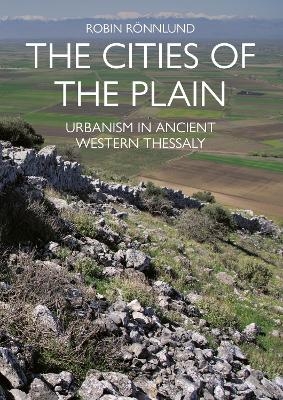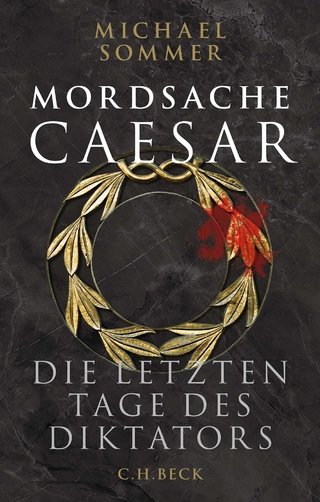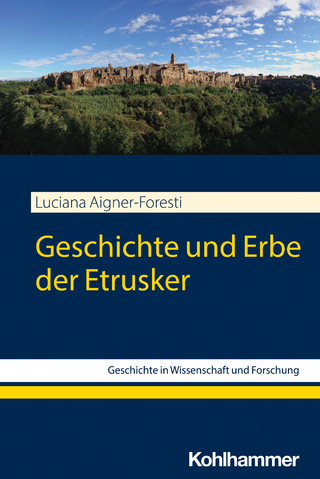
The Cities of the Plain
Oxbow Books (Verlag)
978-1-78925-992-6 (ISBN)
This book explores urbanism in Antiquity from an archaeological perspective, focusing on the area of western Thessaly in central Greece. Presenting all the available evidence for ancient urban sites in the region, the study outlines and discusses the origins, development, and decline of urbanism in the area.
The archaeological evidence shows that urban sites in western Thessaly developed from the mid-4th century BCE, with at least 25 identified contemporaneous cities spread over the area. These cities appear to have been planned and organised from the onset, with regular street-grids, fortification systems and water supply works, but were generally short-lived, typically existing for only five–six generations. Most of the sites were completely or nearly completely abandoned as settlements in the early 2nd century BCE, often with evidence of violent destruction, and only a handful survived as smaller regional centres under the Roman administration. Restorations of the former urban sites and especially their fortifications occur towards the end of Antiquity, especially the first half of the 6th century CE, but re-occupation appears again to have been short lived, as only three cities survived into the Middle Ages.
From a regional perspective, the study shows that the rise and fall of urbanism itself did not necessarily cause complete socio-political disruption, but rather reflect changes in regional and supra-regional political organisation. On a global scale, the study exemplifies the political nature of the pre-Industrial city, its synthetic rather than organic role in agrarian societies, and the cyclic nature of urbanity in history.
The book contains an extensive catalogue, presenting each site with photographs, topographical sketches, and complete bibliography.
Robin Rönnlund is an archaeologist at the Swedish Institute at Athens and the University of Thessaly, Greece. His main research interests are ancient urbanity, landscape archaeology, and ancient Thessaly.
Chapter 1: Introduction
The topography of Western Thessaly
A very brief overview of the history of ancient Western Thessaly
A summary of previous research
‘Cities’ in Western Thessaly, or, how to compile a catalogue
Chapter 2: The evidence
The pre-Urban setting
The urban sites of the late Classical and subsequent periods
Non-urban fortified sites
Textual evidence
Chapter 3: Discussion
The late Classical and Hellenistic cities
The Roman-period cities
The Early Byzantine towns
Estimating urban populations
Territory, a terrible term
The nature of urbanisation, or, who paid for it all?
De-urbanisation and the non-organic nature of cities
The returns of cities and ‘cyclic urbanism’
Chapter 4: Conclusions
Appendix 1: Catalogue of sites
1. Chtouri
2. Domokos
3. Ekkara with environs
4. Episkopi
5. Ermitsi with environs
6. Farsala
7. Fiki
8. Fyllo with environs
9. Gefyria
10. Kalampaka
11. Kallithiro with environs
12. Kalogiroi
13. Kedros
14. Klokotos
15. Krini
16. Metamorfosi
17. Mitropoli
18. Myrini
19. Neo Monastiri
20. Paliogardiki
21. Pialeia
22. Proastio
23. Pyrgos Ithomis
24. Pyrgos Kieriou
25. Omvriasa
26. Skoumpos
27. Sykies
28. Trikala
29. Vlochos
30. Zarkos with environs
Appendix 2: Catalogue of fortified sites
Bibliography
| Erscheinungsdatum | 01.08.2023 |
|---|---|
| Verlagsort | Oxford |
| Sprache | englisch |
| Maße | 216 x 279 mm |
| Themenwelt | Geisteswissenschaften ► Archäologie |
| Geschichte ► Allgemeine Geschichte ► Altertum / Antike | |
| ISBN-10 | 1-78925-992-4 / 1789259924 |
| ISBN-13 | 978-1-78925-992-6 / 9781789259926 |
| Zustand | Neuware |
| Informationen gemäß Produktsicherheitsverordnung (GPSR) | |
| Haben Sie eine Frage zum Produkt? |
aus dem Bereich


